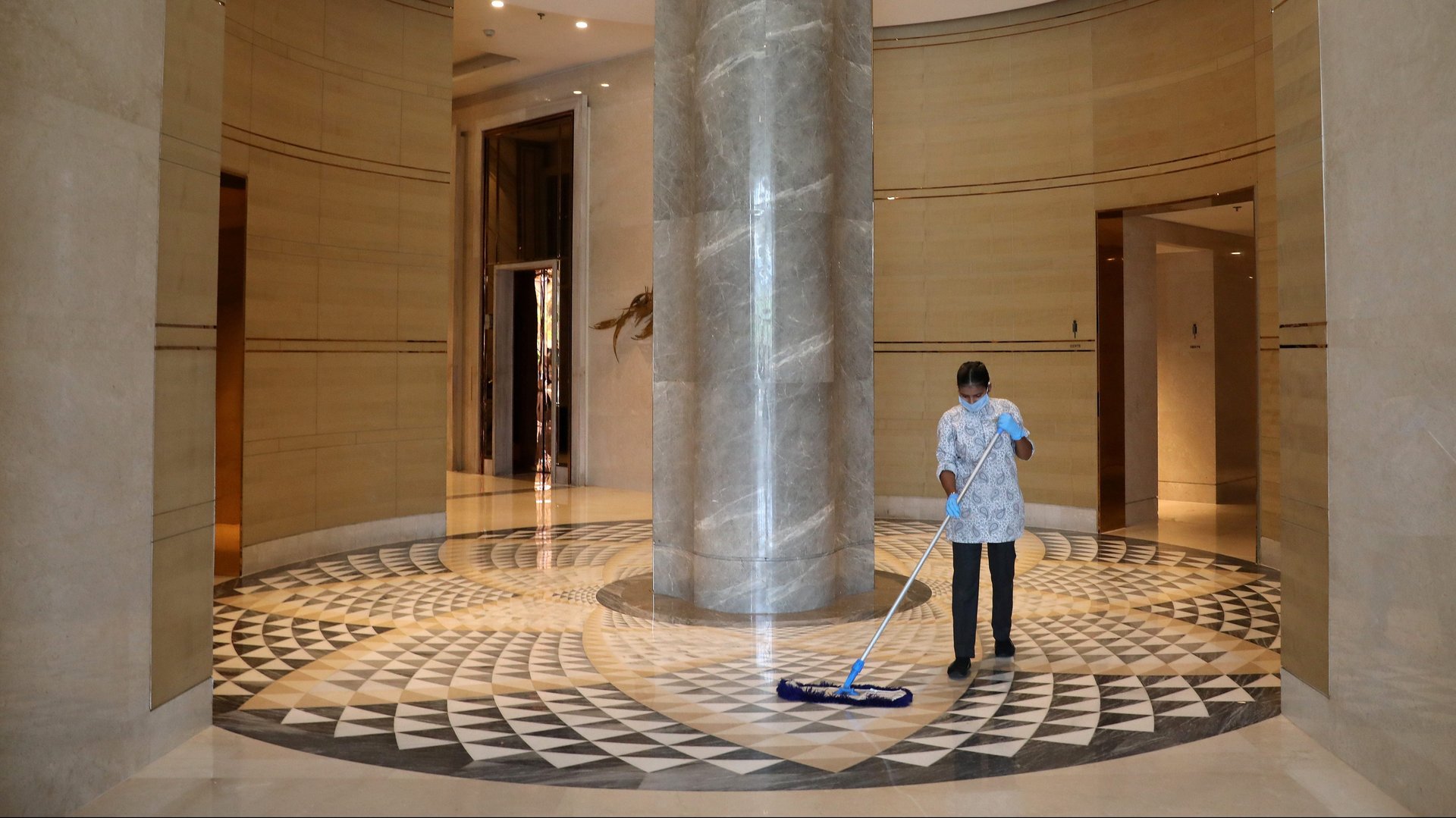India has officially “unlocked” but its economy is still in shackles
After nearly 70 days of complete lockdown to curb the spread of Covid-19 in April and May, businesses in India were reopened in a phased manner starting June 1. While industries, malls, offices, restaurants, shops, and religious places were allowed to open with a bunch of caveats, cinema halls, pubs, and public transport—including railways and metros—have remained shut. Some “containment zones” that have a high number of Covid-19 cases are still under lockdown.


After nearly 70 days of complete lockdown to curb the spread of Covid-19 in April and May, businesses in India were reopened in a phased manner starting June 1. While industries, malls, offices, restaurants, shops, and religious places were allowed to open with a bunch of caveats, cinema halls, pubs, and public transport—including railways and metros—have remained shut. Some “containment zones” that have a high number of Covid-19 cases are still under lockdown.
The gradual reopening has certainly helped some businesses, but the process of economic recovery is slow and painful.
The need for social distancing amid an increasing number of Covid-19 cases has kept that streets and markets nearly as deserted as they were during the nationwide lockdown.
Google’s mobility data, which depicts the movement of individuals, showed that Indians spent more time at home than outside in the last week of July. “This behaviour was more pronounced for states with a higher number of active cases and/or higher growth rate,” stated a Kotak Institutional Equities report after analysing Google mobility data.
In addition, industries have re-opened but aren’t functioning at their optimal levels due to state-level curbs and subdued demand. The restrictions on mobility have been eased somewhat but whichever modes of public transport are operational are accessible only to “essential” workers like bankers, doctors, and nurses.
The thousands of professionals who work in other “non-essential” industries “will lose their jobs and will be replaced by others,” said Partha Mukhopadhyay, senior fellow, Centre for Policy Research. “It is possible that in (the) future, employers may be a little reluctant to hire commuters,” he added, which will be tricky given that in most metros, commercial hubs are far from areas that offer affordable housing.
Economic indicators show that partial restrictions paired with weak demand amid layoffs and salary cuts are keeping the economy in limbo.
Poor economic indicators
Some important economic indicators in July spell bad news for India’s economic recovery. “While the indicators have improved from the bottom, off late we have been witnessing a plateauing out…and we are still not at pre-Covid levels on an aggregate basis,” said Shibani Kurian, head of equity research of Mumbai-based Kotak Mahindra Asset Management.
The composite Purchasing Managers Index—a popular indicator released by London-based IHS Markit—revealed that India’s service and manufacturing output continued to contract in July.
The PMI index’s findings were further vindicated by a sharp drop in railway freight volumes, which shows that either fewer goods are being produced or in demand for transportation.
The non-food credit growth (discounting loans given by banks to state-owned agencies for procuring crops from framers) has also dropped over the last four months.
With all these indicators in the red, the uncertainty over a complete recovery is only going to escalate.
India’s economic recovery
Economists believe that the weak demand due to falling incomes and partial lockdowns will have a damaging effect on businesses in the medium-term.
“This is because a number of businesses, especially micro, small, and medium enterprises, will not be able to survive without consumers or with very limited consumer demand for a long time. They will become bankrupt and go out of business,” said Mukhopadhyay of Centre for Policy Research.
Small and medium enterprises can restart their operations using the government’s aid such as moratorium, debt restructuring, and credit. But the core problem is that they don’t have commensurate demand for their products and services, said Sunil Sinha, principal economist with Mumbai-based credit rating agency India Ratings and Research.
Also, these taps of liquidity, which the government and Reserve Bank of India have opened, would have to be closed eventually.
Poor demand will further stretch the balance sheets and cash flows of many businesses, making them vulnerable to takeovers and mergers. This could impact the incomes of Indian households, which are already under strain and are curtailing their spending.
“The consolidation is likely to rationalise (reduce) employment and incomes,” predicted Mukhopadhyay, adding that sectors like telecom, travel (air and bus), retail and gig companies could witness high numbers of mergers or consolidations.
This will also translate into fear of further pay cuts and unemployment. Both of these will lead to lower spending, an increase in precautionary savings, and a reduction in discretionary consumption, according to Mukhopadhyay.
Adding to this vicious cycle, the fear of Covid-19 is also keeping people away from public spaces. Sinha asserts that the economy won’t be fully functional until a vaccine is discovered and disbursed.
All this means the government’s task is cut out as the economy sinks into a deeper slowdown. But this sharp economic downturn doesn’t “surprise” economists like Lewis Cooper of IHS Markit who stated that the lockdown “will have to be loosened and companies reopened before the sector(s) can move towards stabilisation.”